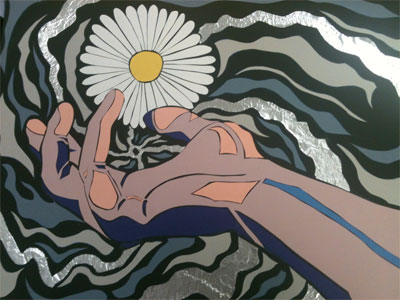All Nonfiction
- Bullying
- Books
- Academic
- Author Interviews
- Celebrity interviews
- College Articles
- College Essays
- Educator of the Year
- Heroes
- Interviews
- Memoir
- Personal Experience
- Sports
- Travel & Culture
All Opinions
- Bullying
- Current Events / Politics
- Discrimination
- Drugs / Alcohol / Smoking
- Entertainment / Celebrities
- Environment
- Love / Relationships
- Movies / Music / TV
- Pop Culture / Trends
- School / College
- Social Issues / Civics
- Spirituality / Religion
- Sports / Hobbies
All Hot Topics
- Bullying
- Community Service
- Environment
- Health
- Letters to the Editor
- Pride & Prejudice
- What Matters
- Back
Summer Guide
- Program Links
- Program Reviews
- Back
College Guide
- College Links
- College Reviews
- College Essays
- College Articles
- Back
Growing Up
I liked the comfort of hiding behind my mother. The first day of kindergarten I had gotten a stomach ache and was full of butterflies upon meeting Ms. May, the lady I still remember to this day, a woman with ginger hair and red glasses that complemented her fair skin. I hid behind my mother, thinking that she was the only person who understood and could protect me.
Before that first day of school, my doctor had said I needed glasses. Following my mother’s instructions, Ms. May made sure I put them on every day. I vividly remember her reminding me to wear them and a boy in class calling me “four eyes.” Sitting there on the learning rug, at only fiveyears old, I cried—the type of uncontrollable sobbing where I could not catch my breath. Ms. May took me aside, dried my tears, and told me that there was nothing wrong with having glasses. She assured me that I needed them, and they were a part of me. She even removed her own glasses to show me how blurry they were, that her vision was worse than mine. I felt better, and red became my favorite color.
Later in elementary and the first two years of middle school, I was confident in myself; boys and girls would laugh and play together. However, in eighth grade, boys started tojudge and objectify girls for only their looks without knowing anything about the girls’ personalities. At such a young age, girls’ identities seemed to be pre-destined with just one look. This “one look” based on physical appearance grouped girls into two simple categories—who was popular and who was considered “lame.” I found I was constantly questioning myself: Am I skinny enough? Am I pretty enough? What do I need to do to be perfect?
These thoughts followed me into the summer before high school. I was an incoming freshman and could only wonder what these next four years were going to bring me. In this whole process, I lost the glasses and created a relationship among makeup, mirrors, and myself. This change was self-destructive, because I had contradicted myself: I inadvertently let others shape me into the person whom I thought I had created on my own. Having this epiphany led me to realizethat I wanted to find my authentic identity. At 17 years old, I am still learning about myself, but I am now committed tounapologetically standing out as an independent, unique young woman each day.
For young girls today and tomorrow, I want to tell them not to be ashamed for who they are or what they look like. Their anatomy should not define their self-worth. Each individual human comes with a code, their own DNA and soul, which distinguishes each person from the other. We are all completely different and that is what defines beauty. I hope that my struggles and realization can provide young girls with the same comfort and support that Ms. May provided me back when I was in kindergarten.

Similar Articles
JOIN THE DISCUSSION
This article has 0 comments.

Writing this I reflected on the reality that most girls during this coming of age experience. Personally I feel like I’m still growing but with high school almost done I’ve learned very valuable things about myself physically and mentally.